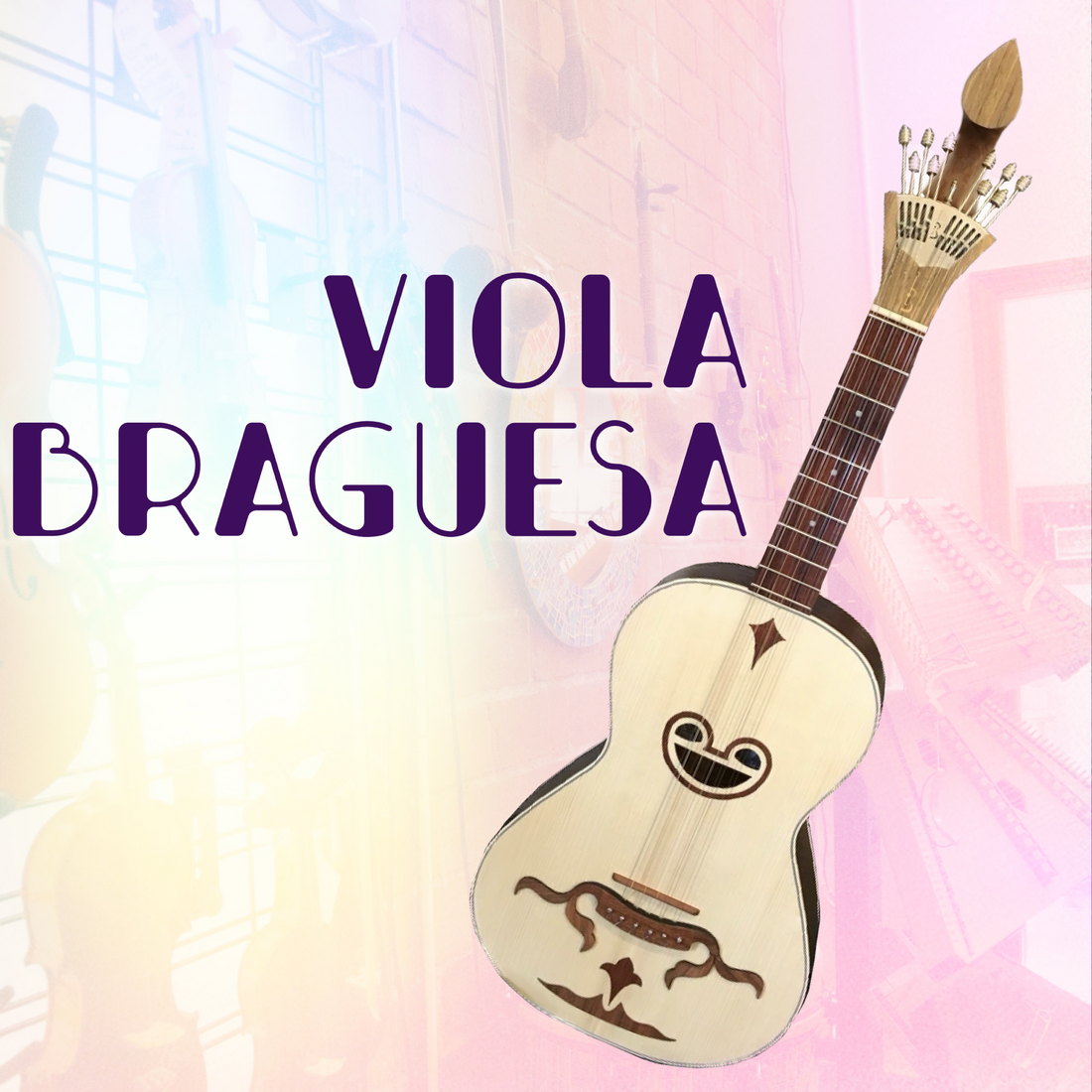The viola braguesa is a 17th century Portuguese Baroque guitar. It is also known as viola da braga, named for the Braga region of northwestern Portugal. Specifically, the northern Atlantic seaboard between the Douro and Minho rivers (The Entre Douro e Minho region, sometimes simply referred to as Minho). It likely developed from the Spanish vihuela, a large guitar-shaped instrument from the Renaissance period, and it is a predecessor of the Brazilian 10-string (5-course) viola caipira.
Viola braguesas are a type of guitar, commonly adorned with a half-circle sound hole with two teardrops on top (like the mouth of a stingray), and a bridge shaped like a mustache with leaves on both sides. They are a bit smaller than a typical guitar (usually between 72 and 90 cm in total length), with a shorter neck (around 500 mm scale length).
Viola braguesas are part of a family of closely related wire-strung violas (violas de arame), which also include the Viola Toeira, Viola Amarantina, Viola Campaniça e Beiroa, and Viola da Terra. A standard tuning for the 10-string viola braguesa (grouped into 5 courses of string pairs) is as follows:
| C4 C3 | G4 G3 | A4 A3 | D4 D4 | G4 G4 |
The three lowest sets of steel strings are tuned an octave apart, and the top two pairs of strings are tuned in unison (as you'd find on a mandolin). For more info on this, you can check out the set of strings from La Bella on our website.
Traditionally, the braguesa was played as an accompaniment instrument, though certain performers have mixed melody and counterpoint with chordal accompaniment to great effect. The viola braguesa is considered the most "brilhante" (brilliant) viola in the Portuguese chordal instrument family, and the most popular traditional instrument of the Portuguese northwest today. It has a special place in the instrumental styles of the region, including chulas, rusgas, and desafios (challenge songs), played either solo, as accompaniment for vocals, or alongside another instrument (cavaquinho, mandolin, rabeca fiddle, and guitar). It's well worth taking a listen to some esteemed players of the instrument and hearing it for yourself!
Some videos featuring Viola Braguesa:
- Amadeu Magalhaes, some example strumming technique
- Rubens Cardosa self-accompanies the melody Silvinha
- Chico Gouveia plays Vira de Santa Marta
Click here to view the Viola Braguesa in our Online Store:
- APC Viola Braguesa (SKU:STR242)
- Viola Braguesa (SKU:MAN055)
